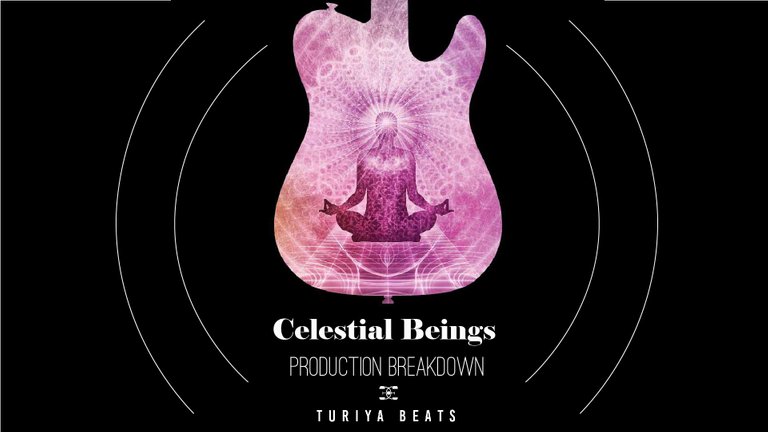 This post is about the breakdown and analysis of a song called Celestial Beings which is part of my album named Electric Illumination. I'll be sharing how I created this song from scratch and the process involved from start to finish. My music has evolved considerably from when I first embarked on this music production journey earlier this year. I've picked up many techniques and tips from scouring YouTube tutorials which I'm now sharing through this blog post series. I've come up with original illustrations that you can use as reference to creating music on whatever platform you're comfortable with, as the same principles are applicable on any software. The format I'm using starts with the song itself that you can listen to as you read this post which then covers the creation of the different components of the song. Hope you enjoy this insight into my creative process and learn something valuable as well.
This post is about the breakdown and analysis of a song called Celestial Beings which is part of my album named Electric Illumination. I'll be sharing how I created this song from scratch and the process involved from start to finish. My music has evolved considerably from when I first embarked on this music production journey earlier this year. I've picked up many techniques and tips from scouring YouTube tutorials which I'm now sharing through this blog post series. I've come up with original illustrations that you can use as reference to creating music on whatever platform you're comfortable with, as the same principles are applicable on any software. The format I'm using starts with the song itself that you can listen to as you read this post which then covers the creation of the different components of the song. Hope you enjoy this insight into my creative process and learn something valuable as well.
 https://soundcloud.com/turiyabeats/celestial-beings?si=6dc07c48c0764966b2ccfded311f7400&utm_source=clipboard&utm_medium=text&utm_campaign=social_sharing
https://soundcloud.com/turiyabeats/celestial-beings?si=6dc07c48c0764966b2ccfded311f7400&utm_source=clipboard&utm_medium=text&utm_campaign=social_sharing

Introduction
This song features a sample from a speech by Terrence Mckenna that I found available to use under a creative commons license. Sometimes using samples can be legally murky so it's always good to double check if the samples you use are viable for your project. Another thing I like to do whenever I use samples is to layer them with original sounds so it becomes unique and not like I'm just splicing together pre made sounds. This is also a way to express creativity while using building blocks that fit into the broader creative vision. The way I did this for the introduction sample was to duplicate it and then apply a vocoder that follows similar notes to my bass pattern. This just adds that extra layer of ear candy.
The Drums
The drums in this song are inspired by breakbeat music which primarily means that the kick isn't on regular intervals but shuffles around to make that funky groove associated with it.
 As you can see, I've used some variation in my kicks to give that breakbeat feel. You can visually see why this genre is called breakbeat as the kicks are unevenly spaced through the track. It takes awhile to find a groove that works and I usually play around until I find a rhythm that works. Once the main groove is established, it's repeated throughout the track and I can then move on to the rest of the drums.
As you can see, I've used some variation in my kicks to give that breakbeat feel. You can visually see why this genre is called breakbeat as the kicks are unevenly spaced through the track. It takes awhile to find a groove that works and I usually play around until I find a rhythm that works. Once the main groove is established, it's repeated throughout the track and I can then move on to the rest of the drums.
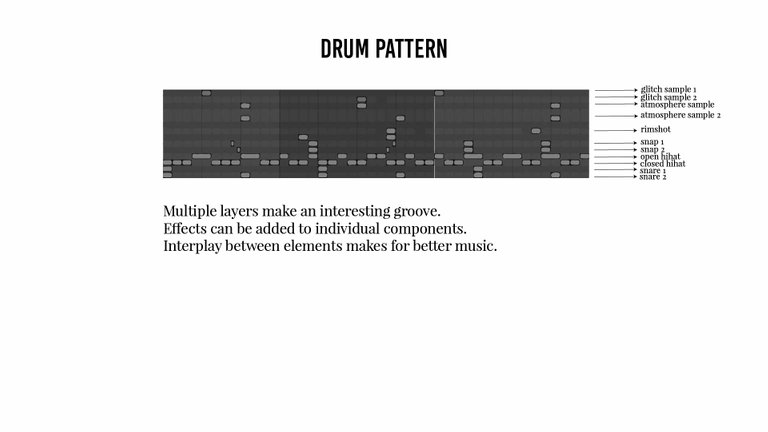 Breakbeat is all about that groove, so this part is worth taking time over. As you can see here, several different components come together to form the rest of the drums. Some of the ways in which I add intrigue to the beat is to take short samples from atmospheric sounds in the song to add to my drum rack to add complexity to the drums and tie in to the rest of the song. Another way this is done is by alternating between sound samples. As you can see from my pattern, I double up my snare with another snare sound but only on every other beat. This adds movement and flow to the rhythm. I also add effects to only parts of the entire drum pattern, for example I add reverb only to the snares and I add a slight echo to the finger snaps which makes the entire beat gel together better. Figuring out a decent sounding pattern is important, but sound selection is even more so. Since there are so many different elements, they have to sound cohesive. This usually takes swapping out many different sounds from my library to find something that fits. I've also learnt that sometimes samples that sound good in isolation do not sound good in the mix. Music is subjective but I have learnt that my ears have been getting trained through the process of learning production and I'm able to find what works for me quicker now than before. This beat will be repeated through the song, so it's important to get right. Once I'm satisfied with how the beat sounds, it's on to the next component.
Breakbeat is all about that groove, so this part is worth taking time over. As you can see here, several different components come together to form the rest of the drums. Some of the ways in which I add intrigue to the beat is to take short samples from atmospheric sounds in the song to add to my drum rack to add complexity to the drums and tie in to the rest of the song. Another way this is done is by alternating between sound samples. As you can see from my pattern, I double up my snare with another snare sound but only on every other beat. This adds movement and flow to the rhythm. I also add effects to only parts of the entire drum pattern, for example I add reverb only to the snares and I add a slight echo to the finger snaps which makes the entire beat gel together better. Figuring out a decent sounding pattern is important, but sound selection is even more so. Since there are so many different elements, they have to sound cohesive. This usually takes swapping out many different sounds from my library to find something that fits. I've also learnt that sometimes samples that sound good in isolation do not sound good in the mix. Music is subjective but I have learnt that my ears have been getting trained through the process of learning production and I'm able to find what works for me quicker now than before. This beat will be repeated through the song, so it's important to get right. Once I'm satisfied with how the beat sounds, it's on to the next component.
Bass
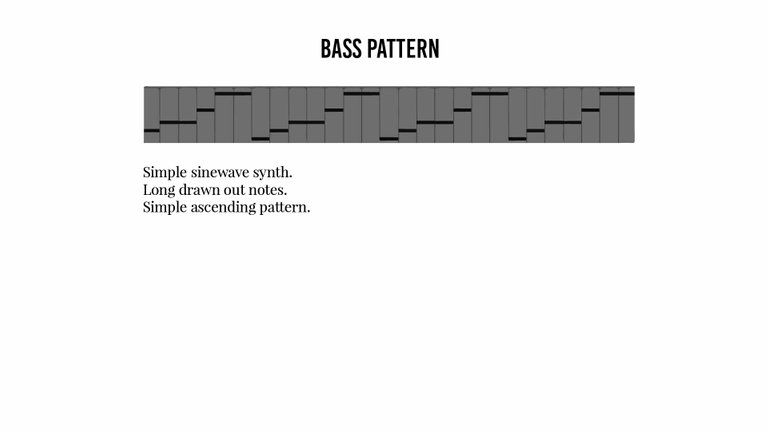 The bass is made with a powerful but simple sinewave synth instrument with high frequencies cut out. For this song I wanted a deep and powerful feeling so the bass melody is simple which gives space for that sinewave to shine. This can be done in any scale, but I chose to write this track in E minor which is what I feel comfortable playing on my guitar which comes in later on. Nothing fancy here, just pure and simple bass.
The bass is made with a powerful but simple sinewave synth instrument with high frequencies cut out. For this song I wanted a deep and powerful feeling so the bass melody is simple which gives space for that sinewave to shine. This can be done in any scale, but I chose to write this track in E minor which is what I feel comfortable playing on my guitar which comes in later on. Nothing fancy here, just pure and simple bass.
Chords
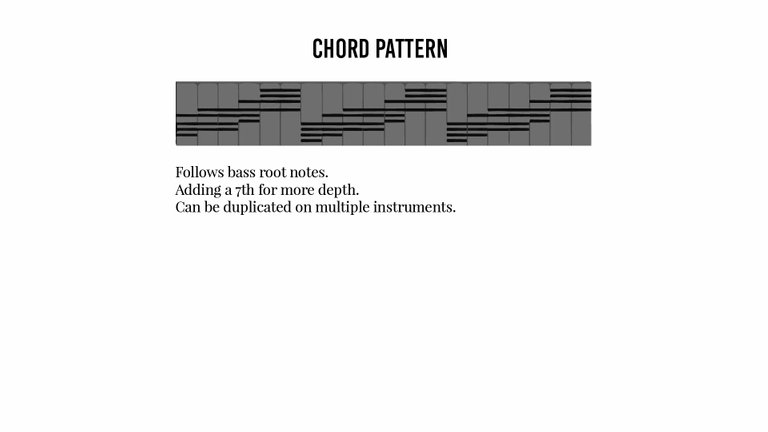
The chords follow the same root notes as the bass. To add a lusher and richer sound, I add in a fourth note instead of the simpler 3 note chords. Sometimes I get confused with diminished and augmented chords and some of the more intense musical theory, but this gets easier when you know you're building on top of the bass melody and knowing the scale you're writing in also helps stay in tune through the process. The chord pattern is applied on different instruments. Perhaps a deep synth sound that can be complimented with a more organic piano sound. It's mostly trial and error to pick the sounds that I feel capture the vibe I want.
Atmosphere
At this stage the foundation of the track is laid out and the backbone is created. As I mentioned in the drum section, I used snippets of atmospheric elements to add complexity to the drums. This is where I add different atmospheric sounds to add texture to the track. This could be anything from the sound of the ocean, to bird song. Again, it's mostly about using my ears to find what fits and sometimes removing elements that don't. With this step complete, the foundation is finished and I can move on to the second half of completing the song.
Guitar Leads
This part begins with noodling around on my guitar. Since I know this track is in E minor, I improvise my leads that follow the scale. I usually improvise a few different takes and then use one that I like better. While it's possible to obsess over the perfect melody, I usually just let it organically unfold. I know that I have a certain level of talent with the guitar, but instead of judging myself for my lack of skill, I tell myself that this is a snapshot of where I am in my musical journey and move on. After recording some takes that I'm happy with, the next step is duplicating the tracks and adding effects like delays, flanges and phasers for that psychedelic rock vibe that I love. I also compliment my guitar playing with other guitar samples as that diversity makes for better listening in my opinion. It's about finding that balance where the guitars sounds nice in the mix and don't overpower it or struggle to come through.
Synth Leads
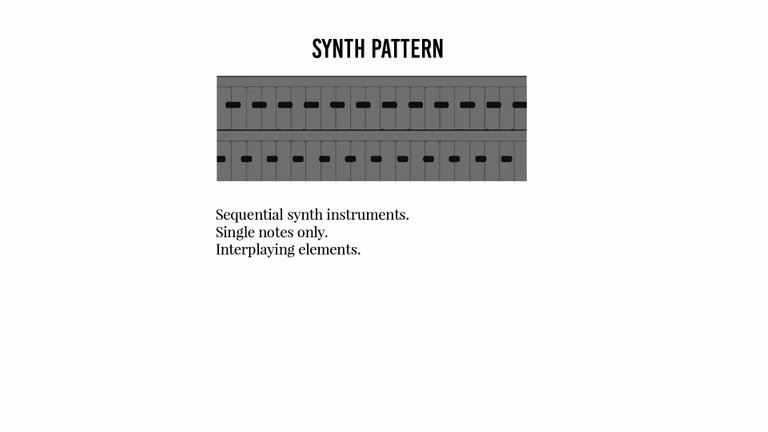
Since my guitars form a major part of my lead melodies, I add synths to back them up instead of creating separate synth leads. What this looks like is using a sequential synth that chops up, breaks down and adds effects to a single note, in this case E as that's the scale my song is in. I use multiple instruments like this and have them play alternately as this creates movement and a dynamic soundscape. I may also try replicating this using the E minor chord in a few specific areas.
The Secret Sauces
At this stage in the process, the majority of the song writing process is over and it's now about adding that extra razzle dazzle and unique creativity. This is also where I put in FX samples, risers, sweeps and ear candy of different kinds. Another prominent way I add some flair is by using third party plugins to add more layers to my sound design. One amazing free plugin I found is called filterstep and what it does as the name suggests, is apply randomised filters in steps. This sounds like a more unique flow when I duplicate my chord pattern and apply this plugin. It allows for things that I may not be able to come up with otherwise. This stage can get rather whacky but yet again it's about finding what fits and not overproducing. When I'm happy with what I have it's almost time to hit that export button.
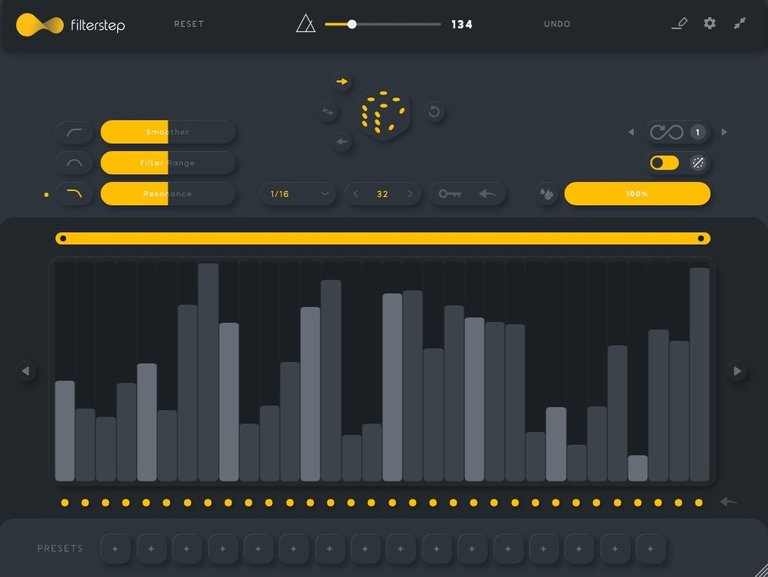
Mixing
A lot of my production journey has been about creation and I'm not particularly well versed in the art of the mixing. Still, I apply the basic principles like taking the low frequencies out of sounds so they don't clash with the bass and adjusting my mid and high frequencies on lead components so they sit better in the mix. A lot of mixing for me also involves adjusting the volumes on individual tracks so the master channel sounds good. There's a little bit of tweaking and adjustment at this stage until I arrive at something that I'm happy with.
Conclusion
There you have it. These are the steps I took to create Celestial Beings which is the first song on my album called Electric Illumination. Hope you enjoyed it! It's been a beautiful journey of learning and self discovery for me.
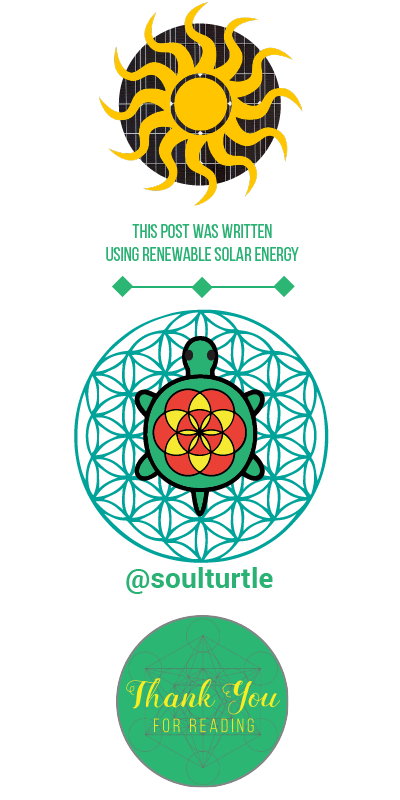




















This is the first of your posts that I've seen. Such a great idea to run through your creative process with illustrations and other graphics.
I listen to a lot of electronic music, and your quality is right up there with what is commercially available. I turned my music station off and have your music playing in my background now, in its place.
Looking forward to more! Cheers!
Thank you so much for your comment.
A lot of times during this music journey, I've faced self doubt and stumbling blocks. Reading this gives me the motivation to keep at it, and I appreciate you taking the time to share your thoughts. It really means a lot that you genuinely liked listening to my creative offerings.
I'm looking at doing a similar breakdown for the rest of the tracks on the album and future music I make as well, so stay tuned for that!
Do you want to get involved? Do you want to support music and this project? Follow us to keep you updated and read our Introduction post!
🎶 Join us on our Discord Server! 🎵
Your content has been voted as a part of Encouragement program. Keep up the good work!
Use Ecency daily to boost your growth on platform!
Support Ecency
Vote for new Proposal
Delegate HP and earn more